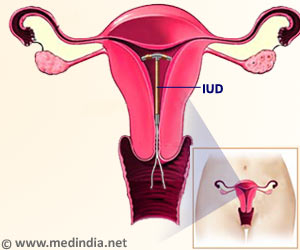According to the latest on breast-feeding, there is no hard and fast rule as to how a mother should feed her newborn.
According to the latest on breast-feeding, there is no hard and fast rule as to how a mother should feed her newborn. Most young mothers would be more than glad to endorse that view as standard positions like sitting upright while breast feeding, can prove too painful for motherly feelings to override.
Take the case of Nicola Adolphe. Nicola accordingly, had a horrendous time trying to breastfeed when her daughter Deborah was born.As manager of a play center she knew that breastfeeding was best and after having a home birth, wanted to do everything as naturally as possible.
"I had about six weeks of pain, I had a bleeding nipple on the right and fed on my left the whole time which then became really sore.
"It was really unbearable and I was half way to giving up at six weeks, and that's a big thing for me to admit”, she recalls.
Yet, luck was on her side. Through an online mothers support group, Nicola who lives in Watford, found out about Biological Nurturing - a program promoting different ways of holding babies to encourage breastfeeding - which offered her advice over the phone.
Fortunately she also had a meeting with Dr Suzanne Colson, senior midwifery lecturer at Canterbury Christ Church University, who advises on this technique.
Advertisement
"I could lay down on the sofa, gradually reclining my body, which would take the weight of the baby and it's much freer”, Nicola says.
According to research, breastfeeding newborn babies lying down may boost the chances of success.
A study of 40 mothers breastfeeding in different positions found that babies' natural reflexes kicked in more easily when the mothers were lying down.
The position seemed to trigger primitive reflexes usually seen in young mammals, according to the researchers, led by Dr. Colson.
Dr. Colson advises women on the technique called biological nurturing where the mother lies down and lets the baby lie on its tummy on top of her.
To look at whether this technique promotes feeding reflexes in the baby, she videotaped 40 women breastfeeding in a sitting-up position and lying down or reclining in the first month of life.
She spotted 17 reflexes in babies when they were breastfed lying down, including reflexes normally associated with other mammals who feed their babies in this way.
Breastfeeding in a sitting-up position only promoted the three normally seen reflexes - routing, latching and sucking.
Mothers whom breastfed lying down seemed to have more success and, although the majority of women in the study had initially reported problems with breastfeeding, after using the technique all the women continued breastfeeding.
Dr Colson believes that though the current study can not prove that this technique is more successful than the standard sitting-up position, it challenges the view that the "correct way" to breastfeed is sitting bolt upright or lying on your side.
"I found that mothers who breastfed their infants semi-reclined or flat-lying (as opposed to side-lying), in positions that mirrored the feeding positions of other mammals, had the greatest success.
"When mothers were lying flat or semi-reclined, babies could find the breast easier and in many cases attach themselves and feed whilst asleep.
"The research suggests that babies when they are on their tummy display these primitive reflexes, head bobbing in particular, that is seen in other mammals who are abdominal feeders”, Colson says.
Most importantly, she advises mothers to do what feels comfortable.
Says Dr Peter Carter, general secretary of the Royal College of Nursing: "For many new mothers breastfeeding can be difficult and challenging. Not being able to do something which is supposed to be as simple and as natural as feeding their own child can leave many new mothers feeling disappointed and let down.
"By challenging conventional breastfeeding positions this new research could go a long way to helping those mothers who are experiencing difficulties feeding their infants by suggesting other easy-to-adopt positions."
Pat O'Brien, consultant in obstetrics and gynecology at University College London and spokesperson for the Royal College of Obstetrics and Gynecology, says it would be useful for women to know they can try different positions. "From a health point of view, there's no reason they couldn't try breastfeeding in that position and we welcome any research that might improve the chances of success. "Maybe women just have to experiment and find a position that suits them best”, he was quoted.
Source-Medindia
ANN/B











